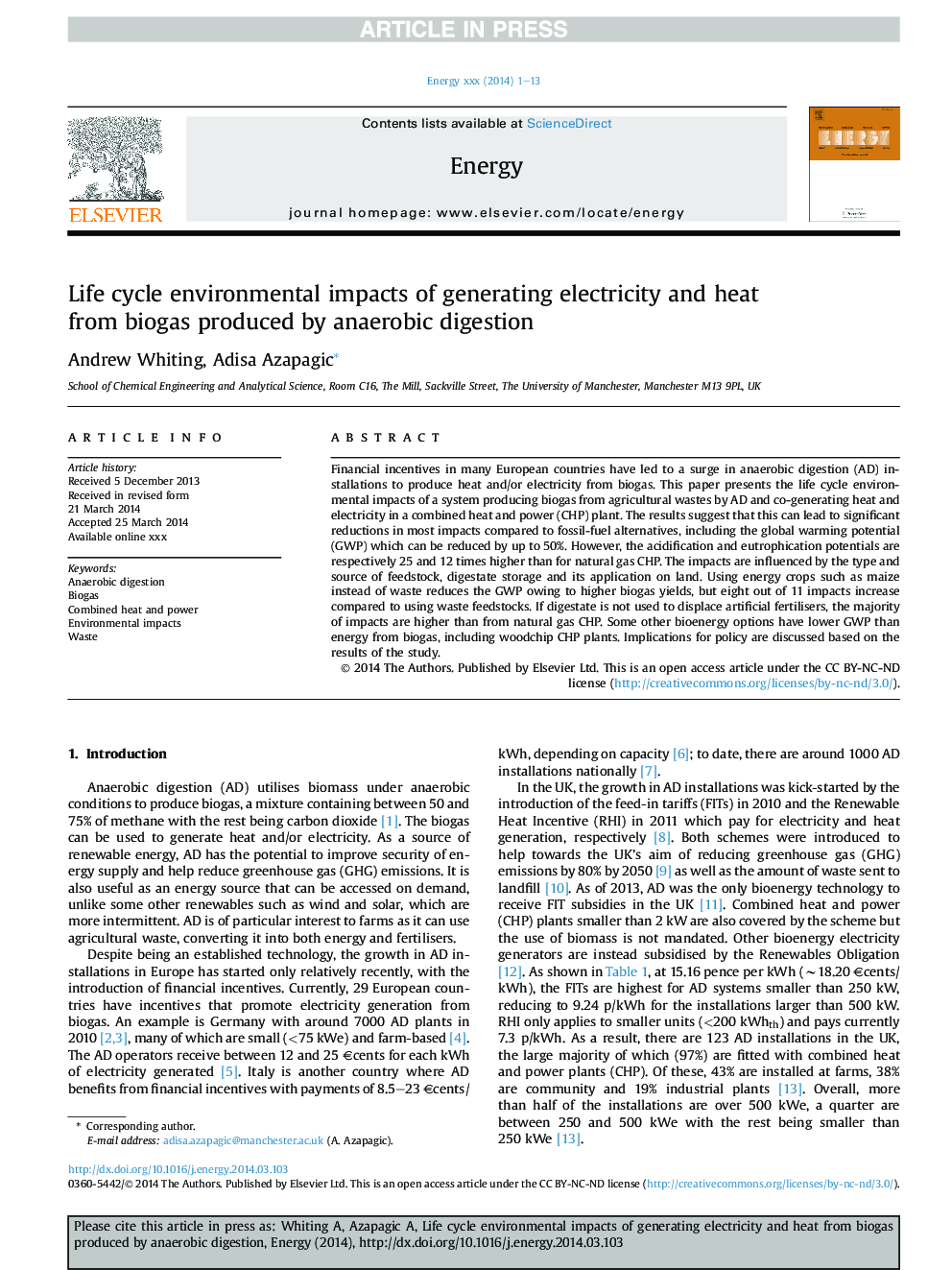| Article ID | Journal | Published Year | Pages | File Type |
|---|---|---|---|---|
| 8077587 | Energy | 2014 | 13 Pages |
Abstract
Financial incentives in many European countries have led to a surge in anaerobic digestion (AD) installations to produce heat and/or electricity from biogas. This paper presents the life cycle environmental impacts of a system producing biogas from agricultural wastes by AD and co-generating heat and electricity in a combined heat and power (CHP) plant. The results suggest that this can lead to significant reductions in most impacts compared to fossil-fuel alternatives, including the global warming potential (GWP) which can be reduced by up to 50%. However, the acidification and eutrophication potentials are respectively 25 and 12 times higher than for natural gas CHP. The impacts are influenced by the type and source of feedstock, digestate storage and its application on land. Using energy crops such as maize instead of waste reduces the GWP owing to higher biogas yields, but eight out of 11 impacts increase compared to using waste feedstocks. If digestate is not used to displace artificial fertilisers, the majority of impacts are higher than from natural gas CHP. Some other bioenergy options have lower GWP than energy from biogas, including woodchip CHP plants. Implications for policy are discussed based on the results of the study.
Related Topics
Physical Sciences and Engineering
Energy
Energy (General)
Authors
Andrew Whiting, Adisa Azapagic,
